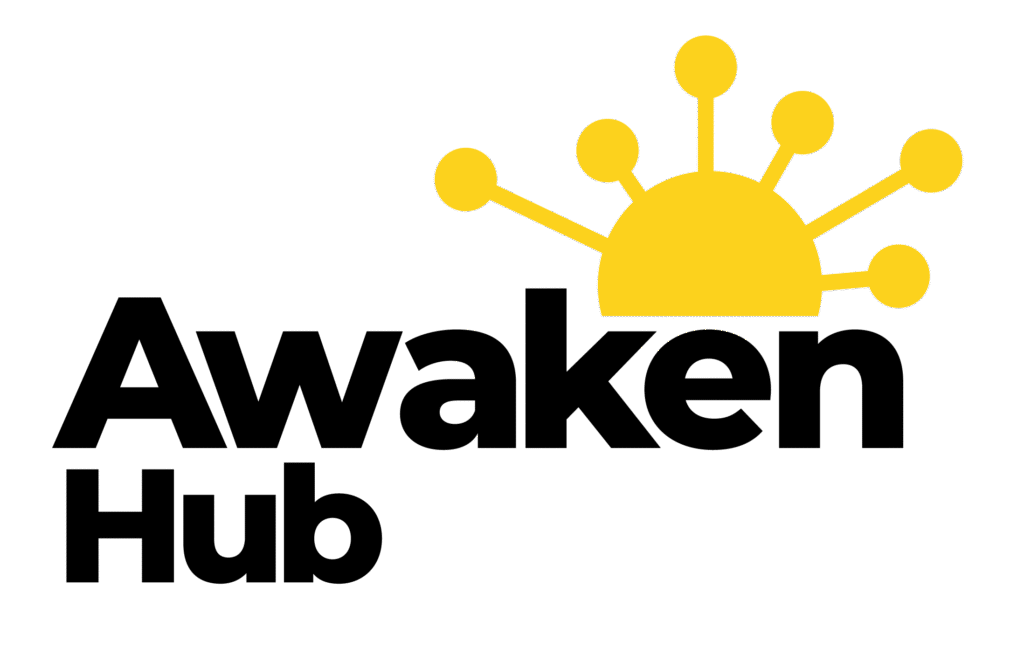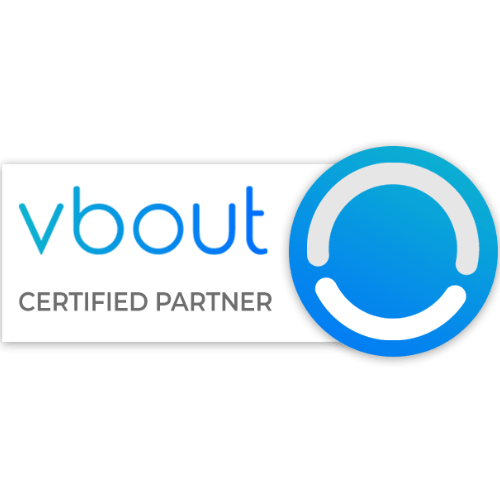How to Improve Local Business SEO Strategy in Less Than an Hour a Day
Boost your sales with our guide on local business SEO strategy! Learn easy tips to optimise in under an hour a day. Read now!
Introduction
A strong local business SEO strategy is crucial for small businesses looking to thrive online. If you’re trying to attract more customers from your local area, you need to ensure your business stands out in local search results. Studies have shown that over 75% of consumers use search engines to find local business information, and this number is growing.
For those who want the quick essentials, here they are:
- Optimise your Google Business Profile: Claim and verify, update details, add images, and encourage reviews.
- Conduct Local Keyword Research: Use tools like Google Keyword Planner and study your competitors.
- Ensure Consistent NAP Citations: Keep your Name, Address, and Phone number consistent across all listings.
- Create and Optimise Local Content: Blog posts, service pages, and event updates tailored to your locality.
- Build and Manage Online Reviews: Encourage, monitor, and respond to reviews.
Local SEO is vital because it helps people in your area find your business when they search online. Mobile searches for phrases like “store open near me” have skyrocketed by 250%, highlighting the urgency for businesses to optimise their online presence.
The potential customer reach through local SEO is immense. With the right strategy, your business can appear in the coveted “local pack” on Google, making it more likely that local searchers will become actual customers.

Optimise Your Google Business Profile
Your Google Business Profile (GBP) is a cornerstone of your local business SEO strategy. It’s free and can significantly boost your visibility in local searches. Here’s how to get it right.
Google My Business and Business Verification
First, you need to claim your Google Business Profile. Visit google.com/business to start the process. Google will ask you to verify your business to confirm its legitimacy. This often involves receiving a postcard at your business address with a verification code. As the business owner, you should complete this step to maintain control over your profile.
Business Hours and Categories
Accurate business hours are crucial. Make sure to update them for holidays and special events. Incorrect hours can lead to frustrated customers and negative reviews.
Choose the right categories for your business. Your primary category should describe your main business activity. Secondary categories can cover other services you offer, expanding the keywords and searches you can rank for.
Photos and Videos
Visual content is powerful. Upload high-quality photos and videos of your business, products, and services. According to Google, businesses with photos receive 42% more requests for directions and 35% more click-throughs to their websites.
Customer Reviews
Online reviews are like gold. Up to 84% of people trust online reviews as much as personal recommendations. Aim for at least 10 five-star reviews on your Google Business Profile. Continually ask satisfied customers to leave reviews. Respond to all reviews, positive or negative, to show you care about customer feedback.
“High-quality, positive reviews from your customers can improve your business visibility and increase the likelihood that a shopper will visit your location,” Google states.
Google Posts
Google Posts allow you to share updates, offers, events, and more directly on your GBP. These posts appear in your profile and can attract more customers. Use them to keep your audience informed and engaged.

Fully Populate Every Section
A complete profile is essential. Fill out every relevant section, including services, products, and attributes (like “wheelchair accessible” or “Wi-Fi available”). The more information you provide, the more likely Google will consider your business relevant for local searches.
With your Google Business Profile optimised, you’re well on your way to improving your local SEO. Next, let’s dive into how to conduct effective local keyword research to further enhance your strategy.
Conduct Local Keyword Research
Effective local keyword research is crucial for a successful local business SEO strategy. Let’s break down the key steps:
Competitor Analysis
Start by checking out what keywords your competitors are using. This can give you a good idea of what’s working in your industry.
Use tools like Semrush’s Organic Research tool. Enter a competitor’s site, go to the “Positions” tab, and filter out branded keywords. Sort by keyword difficulty to find keywords you might want to target. This step helps you identify relevant keywords that are already driving traffic to similar businesses.
Keyword Volume Metrics
Understanding keyword volume metrics is essential to gauge how difficult it is to rank for specific keywords locally. Use tools like the Keyword Overview tool to get local data.
Enter your desired keyword, select your location (it can be as narrow as a city or municipality), and compare local data with national data. This helps you see the competition level in your specific area, making your local business SEO strategy more targeted.
Google Autocomplete
Google Autocomplete is a handy feature that predicts search queries based on what users typically search for. It can help you discover valuable long-tail keywords for local SEO.
For example, if you type “cleaning services” and add a local modifier like “cleaning services London,” you’ll see a list of local keyword suggestions. Keep experimenting with different combinations to build a robust list of local keywords.
Google Keyword Planner
Google Keyword Planner is not just for paid campaigns; it’s also a powerful tool for discovering new keywords related to your business.
Go to the “Discover new keywords” section, then use the “Start with a website” tab. Enter a competitor’s domain to get keyword suggestions based on the terms on their page. Repeat this with a few competitors and compile a list of relevant keywords.
Additionally, the tool provides monthly search data for specific locations, helping you decide which keywords to prioritise.
With these steps, you’ll have a solid foundation for your local keyword research. Next, we’ll explore how to ensure consistent NAP citations to further boost your local SEO.
Ensure Consistent NAP Citations
NAP citations are essential for local businesses. NAP stands for Name, Address, and Phone number. Consistency is crucial here. Google and other search engines use this information to verify your business’s legitimacy.
Why Consistent NAP Citations Matter
Imagine you’re looking for a local café. You find three different addresses for the same café online. Confusing, right? Inconsistent information can frustrate potential customers and confuse search engines, leading to lower search rankings.
Fact: If Google can’t determine which information about your business is correct, it may not show your business at all in search results .
How to Ensure NAP Consistency
List Your NAP in HTML Text: Make sure your name, address, and phone number are in crawlable HTML text on your website. Avoid embedding this information in images, as search engines can’t read it.
Include NAP in Key Locations: Place your NAP in the footer or header of your site and on your “Contact Us” page. This ensures it’s easily accessible and consistent across your website.
Use Online Directories: Submit your NAP to online directories like Yelp, Trip Advisor, and local business directories. This boosts your visibility and helps search engines verify your information.
Check Data Aggregators: For businesses in the United States, ensure your citations are consistent across the four main data aggregators: Apple, Yelp, Bing, and Google. These platforms distribute your business data to many other sites.
Pro Tip: Remove any duplicate listings you find in online directories. Duplicate listings can confuse search engines and hurt your rankings (source).
Tools for Managing NAP Citations
Using tools like Semrush or WhiteSpark can save you time. These tools help you find and fix inconsistent citations. They also allow you to update your information across multiple directories automatically.
Example: A local agency used Semrush to audit their NAP citations and found numerous inconsistencies. By correcting these, they saw a significant boost in their local search rankings.
Regular Audits
Perform regular audits to ensure your NAP remains consistent. This is especially important if you move locations or change your phone number. Regular checks help maintain your business’s credibility and search engine ranking.
Pro Tip: Get a Chamber of Commerce membership in your community. This not only provides an external inbound link but also ensures your business information is listed accurately in a trusted local directory (source).
Next, we’ll dive into creating and optimising local content to further enhance your local SEO strategy.
Create and Optimise Local Content
Creating and optimising local content is crucial for your local business SEO strategy. It helps you rank higher in local search results and connect with your community. Let’s explore some effective ways to do this.
Localised Content
Localised content is content that speaks directly to your local audience. This can be done by:
- Mentioning local landmarks, events, or news. For example, if you’re a bakery in Dublin, you might write about your special doughnuts for St. Patrick’s Day.
- Using local keywords. These are phrases that include your location, like “best bakery in Dublin.”
Blog Posts
Blog posts are a fantastic way to share localised content. Here are a few ideas:
- Local guides: Create guides about your area, like “Top 5 Parks in Dublin” or “Best Places to Eat in Galway.”
- Community stories: Share stories about your involvement in local events or charities.
- Customer spotlights: Highlight loyal customers or local influencers who love your business.
Service Pages
Service pages should also be optimised for local search. Here’s how:
- Include local keywords in headers and text. For example, “Plumbing Services in Cork.”
- Add local testimonials. These build trust and show your community ties.
- Highlight local projects. If you’ve completed a notable project in your area, showcase it with photos and details.
Local Events
Participating in local events is a great way to create content and engage with your community. You can:
- Write about upcoming events. Share details about events you’re attending or sponsoring.
- Post-event recaps. After the event, write a blog post about your experience and include photos or videos.
Customer Success Stories
Sharing customer success stories can boost your credibility and attract new clients. Here’s how to do it:
- Interview satisfied customers. Get quotes and stories about how your business helped them.
- Create case studies. Detail specific problems your business solved for local clients.
- Use multimedia. Include photos, videos, or infographics to make the stories more engaging.
By focusing on these types of content, you can effectively enhance your local SEO strategy and build a stronger connection with your local audience.
Next, we’ll explore how to build and manage online reviews to further boost your local search presence.
Build and Manage Online Reviews
Customer reviews are gold for your local SEO strategy. They build trust, offer social proof, and can significantly impact your search rankings. Here’s how to make the most of them:
Customer Trust and Social Proof
Up to 84% of people trust online reviews as much as personal recommendations. Reviews show potential customers that others have had positive experiences with your business, making them more likely to choose you.
Review Management
Managing reviews isn’t just about collecting them. It’s about responding and engaging with customers. Make it a habit to:
- Respond to every review. Whether positive or negative, a response shows you care. For example, if someone leaves a bad review, a thoughtful reply can turn a negative experience into a positive one.
- Monitor your reviews regularly. Use tools like Google Search Console or Semrush Listing Management to keep track of new reviews and respond promptly.
Encouraging Reviews
Getting reviews doesn’t have to be hard. Here are some simple ways to encourage your customers:
- Ask directly. After a successful transaction, ask your customer to leave a review. A friendly reminder can go a long way.
- Provide a review link. Create a direct link to your Google Business Profile review page. You can generate this link by using your “Place ID” and adding it to this URL:
https://search.google.com/local/writereview?placeid=YOUR_PLACE_ID. - Include the link in your communications. Add the review link to your email signature, receipts, and social media profiles.
Responding to Reviews
Responding to reviews shows potential customers that you value feedback. Here are some tips:
- Be prompt and polite. A quick, courteous response can make a big difference.
- Address specific points. If a reviewer mentions a specific issue, address it directly. This shows you’re paying attention.
- Thank reviewers. Always thank customers for taking the time to leave a review, whether it’s positive or negative.
By actively managing and encouraging reviews, you can enhance your local business SEO strategy and build a solid reputation online.
Next, we’ll dive into improving on-page SEO elements to further optimise your local presence.
Improve On-Page SEO Elements
Improving on-page SEO elements can significantly boost your local business SEO strategy. Let’s break down the key components: title tags, meta descriptions, headers, URL structure, and internal linking.
Title Tags
Title tags are like mini-ads that appear in search results. They should be unique, compelling, and include your targeted keywords.
- Length: Aim for 50-60 characters.
- Keywords: Place your primary keyword near the beginning.
- Local Focus: Include your city or service area (e.g., “Best Bakery in Dublin”).
Example: “Top-Rated Bakery in Dublin | Fresh Bread & Pastries”
Meta Descriptions
Meta descriptions offer a brief summary of your page content. They should entice users to click on your link.
- Length: Aim for 160-200 characters.
- Keywords: Include your primary keyword.
- Call to Action: Encourage clicks with phrases like “Learn more” or “Visit us today.”
Example: “Discover the best bakery in Dublin. Fresh bread, pastries, and more. Visit us today!”
Headers
Headers (H1, H2, H3, etc.) help structure your content and make it easier to read.
- H1 Tag: Use only one H1 tag per page, and include your main keyword.
- Subheaders: Use H2 and H3 tags to break up content and include secondary keywords.
Example:
“`markdown
Best Bakery in Dublin
Fresh Bread Daily
Delicious Pastries
“`
URL Structure
URL structure should be clean, descriptive, and include keywords.
- Keywords: Include relevant keywords in the URL.
- Readability: Make URLs easy to read and understand.
Example: “www.yourbakery.com/dublin-fresh-bread”
Internal Linking
Internal linking helps distribute page authority and improve navigation.
- Relevant Links: Link to relevant pages within your website.
- Anchor Text: Use descriptive anchor text that includes keywords.
Example:
markdown
Check out our [fresh pastries](www.yourbakery.com/pastries) and [daily specials](www.yourbakery.com/daily-specials).
By optimising these on-page SEO elements, you can enhance your local business SEO strategy and improve your visibility in search results.
Next, we’ll explore frequently asked questions about local business SEO strategy.
Frequently Asked Questions about Local Business SEO Strategy
What are local SEO strategies?
Local SEO strategies are techniques used to improve a business’s visibility in local search results. This is crucial because 46% of all Google searches are looking for local information. Local SEO helps businesses show up in these searches, making it easier for potential customers in the area to find them.
How do I optimise my business for local SEO?
Optimising your business for local SEO involves several key steps:
Google Business Profile
Claim and optimise your Google Business Profile. This is essential as it can help your business appear in the local SEO 3-pack, which showcases the top three local businesses for a search query.
- Verify Your Business: Ensure your business is verified by Google.
- Update Information: Keep your business hours, contact details, and services up-to-date.
- Use Google Posts: Share updates and promotions directly on your profile.
- Encourage Reviews: Ask satisfied customers to leave reviews and respond to them authentically.
Local Citations
Ensure that your business’s Name, Address, and Phone number (NAP) are consistent across all online directories. Inconsistent information can confuse search engines and lower your rankings.
- Online Directories: List your business in online directories like Yelp and Yellow Pages.
- Data Aggregators: Use data aggregators to distribute your business information to various platforms.
Online Reviews
Reviews are a form of social proof and can significantly impact your local SEO.
- Encourage Reviews: Ask happy customers to leave positive reviews.
- Respond to Reviews: Engage with customers by responding to their reviews, both positive and negative.
Schema Markup
Use schema markup to provide search engines with more information about your business. This can improve your chances of appearing in rich snippets and other enhanced search results.
Do local businesses need SEO?
Absolutely. Local businesses can benefit significantly from SEO for several reasons:
Importance of Local SEO
Local SEO ensures that your business appears in searches performed by potential customers in your area. This is crucial for driving both online and foot traffic.
Customer Reach
With searches for “open now near me” growing by over 400% year over year, local SEO helps your business be visible to people who are actively looking for services or products in your area.
Competitive Advantage
Ranking higher in local search results can give you a competitive edge over other businesses. The local SEO 3-pack gets more visibility and clicks, which can lead to more customers and increased revenue.
By understanding and implementing these local SEO strategies, you can improve your business’s online presence and attract more local customers.
Next, we’ll summarise the key points and discuss the importance of ongoing optimisation.
Conclusion
Summary of Key Points
We’ve covered essential strategies to boost your local business SEO strategy. Here’s a quick recap:
- Optimise Your Google Business Profile: Ensure your profile is complete, accurate, and regularly updated with photos, business hours, and customer reviews.
- Conduct Local Keyword Research: Use tools like Google Keyword Planner and competitor analysis to find relevant local keywords.
- Ensure Consistent NAP Citations: Maintain consistent name, address, and phone number across all online directories.
- Create and Optimise Local Content: Develop blog posts, service pages, and local event updates that resonate with your local audience.
- Build and Manage Online Reviews: Encourage and respond to customer reviews to build trust and social proof.
- Improve On-Page SEO Elements: Optimise title tags, meta descriptions, headers, and internal linking for better search visibility.
The Digital Projects
At The Digital Projects, we specialise in helping local businesses improve their online presence. Our tailored local SEO services focus on driving traffic, leads, and revenue for your business. Whether you need help with keyword research, creating local content, or managing online reviews, our team is here to assist you.
Importance of Ongoing Optimisation
Local SEO is not a one-time task but an ongoing process. Search algorithms and consumer behaviours are constantly evolving. Regularly updating your Google Business Profile, refreshing your local content, and keeping up with new SEO trends are crucial for maintaining and improving your search rankings.
Consistent effort in your local business SEO strategy will keep you ahead of the competition and ensure that you remain visible to potential customers.
By implementing these strategies and committing to ongoing optimisation, you can significantly improve your local search rankings and attract more customers to your business. Ready to get started? Learn more about our local SEO services and see how we can help you achieve your business goals.












